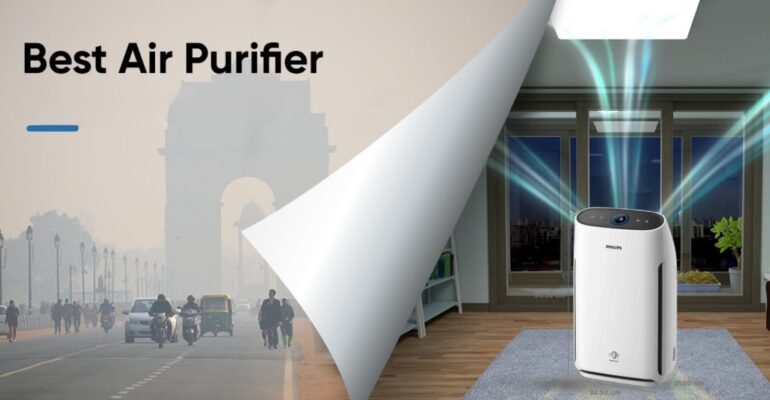The Ultimate Guide to Air Purifiers: Enhancing Indoor Air Quality
August 1, 2024 2024-08-01 10:36The Ultimate Guide to Air Purifiers: Enhancing Indoor Air Quality

The Ultimate Guide to Air Purifiers: Enhancing Indoor Air Quality
What is an Air Purifier?
An air purifier is an electrical device designed to improve indoor air quality by removing contaminants from the air. These devices are particularly beneficial for individuals suffering from allergies, asthma, or other respiratory issues. It can also help reduce the impact of indoor pollutants, including smoke, dust, pet dander, mold spores, pollen, and volatile organic compounds (VOCs).
How Do Air Purifiers Work?
It operate by drawing in air from the environment and passing it through a series of filters to capture and neutralize airborne particles and pollutants. The cleaned air is then circulated back into the room. The effectiveness of an air purifier largely depends on the type and quality of the filters used, as well as the device’s overall design and technology. Here’s a closer look at the core components and processes involved:
1. Pre-Filter
The first line of defense in an air purifier is often a pre-filter. This component captures larger particles such as dust, hair, and pet dander. By trapping these larger particles, the pre-filter helps to extend the life of the main filters by preventing them from becoming clogged too quickly.
2. HEPA Filter
High-Efficiency Particulate Air (HEPA) filters are considered the gold standard in air purification. These filters are capable of capturing 99.97% of particles as small as 0.3 microns, including pollen, mold spores, dust mites, and some bacteria. HEPA filters are made of densely packed fibers that create a maze-like structure, trapping particles as air passes through.
3. Activated Carbon Filter
Activated carbon filters are used to remove gases, odors, and VOCs from the air. These filters contain a form of carbon that has been treated to become extremely porous, increasing its surface area and enhancing its ability to adsorb gases and chemicals. This makes them particularly effective at eliminating smoke, cooking odors, and harmful chemical fumes.
4. UV-C Light
Some air purifiers are equipped with UV-C (ultraviolet-C) light technology. UV-C light is capable of destroying the DNA or RNA of bacteria, viruses, and other microorganisms, rendering them harmless. Air purifiers with UV-C light provide an additional layer of protection against airborne pathogens, which can be particularly useful during flu seasons or in households with vulnerable individuals.
5. Ionizers
Ionizers work by emitting negative ions into the air. These ions attach to positively charged airborne particles, such as dust and allergens, causing them to clump together and fall out of the air. Some air purifiers incorporate ionizers to enhance their ability to remove fine particles, although there is some debate over the safety and effectiveness of this technology.
6. Ozone Generators
Ozone generators produce ozone, a molecule composed of three oxygen atoms, which can neutralize certain pollutants and odors. However, ozone can be harmful to health at high concentrations, and its use in residential air purifiers is generally not recommended due to potential respiratory risks.
Additional Features and Considerations
When choosing an air purifier, there are several additional features and factors to consider:
- CADR (Clean Air Delivery Rate):
- CADR indicates the volume of filtered air delivered by the purifier per minute. Higher CADR ratings mean faster and more efficient air cleaning.
- Energy Efficiency:
- Look for Energy Star-certified models that offer efficient operation without consuming excessive power, which can help reduce electricity bills.
- Noise Levels:
- Consider the noise level of the air purifier, especially if it will be used in bedrooms or quiet spaces. Models with lower decibel ratings are quieter and less likely to cause disturbances.
- Maintenance and Filter Replacement:
- Regular maintenance and timely filter replacements are crucial for the optimal performance of an air purifier. Check the manufacturer’s recommendations for filter lifespan and replacement costs.
- Smart Features:
- Some modern air purifiers come with smart features like air quality sensors, auto mode, timer settings, and remote control via smartphone apps, providing real-time air quality monitoring and adjustments.
Conclusion
they are invaluable tools for improving indoor air quality by removing a wide range of pollutants. Understanding how these devices work, including the various filters and technologies they use, can help you choose the right air purifier for your needs. Whether you’re seeking relief from allergies, protecting your family from airborne pathogens, or simply wanting to breathe cleaner air, It can make a significant difference in your home environment.



